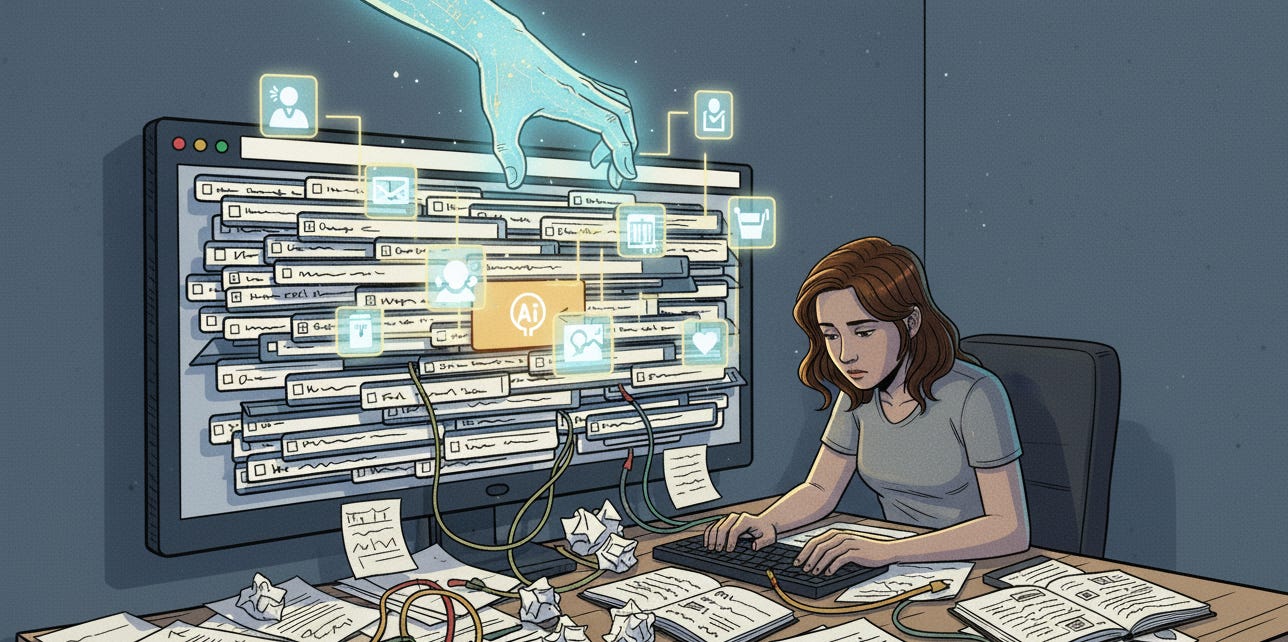How to Actually Learn Things When Your ADHD Brain Won't Engage
I was supposed to learn proper user research methodology last month.
You know, the actual framework stuff. Jobs-to-be-done. Research ops. How to structure interviews so you’re not just asking leading questions.
Saved five articles. Bookmarked two courses. Opened 12 tabs about research synthesis.
Still conducting interviews like I’m just... having conversations and hoping insights magically appear.
You know that feeling?
When you really WANT to learn something. You’re curious. You’re motivated. You can see exactly why this skill matters.
But your brain just... won’t.
It slides off the material like water off a windshield.
The text is too dense. The concepts feel scattered. You can’t see how anything connects. And you definitely can’t see the big picture because you’re drowning in details you don’t understand yet.
So you tab away to look something up.
Three hours later you’ve fallen down a rabbit hole about the history of design thinking and still haven’t figured out how to actually structure an interview.
Yeah.
The ADHD learning trap nobody talks about
Here’s what most learning advice assumes:
You can sit down, start at the beginning, work through material linearly, and build knowledge brick by brick until you understand the whole thing.
That’s not how ADHD brains work.
We need the overview first. The map before the territory. The “why this matters” before the “here’s how to do it.”
We can hyperfocus like nobody’s business... once we’re engaged.
But getting TO engagement? That requires either:
Immediate relevance (solving a problem we have RIGHT NOW)
Clear structure (seeing how all the pieces fit)
Novel connections (oh THAT’S how this relates to that other thing)
Without those? We’re just staring at words that won’t stick.
The problem isn’t that we can’t learn.
It’s that we can’t engage with learning that doesn’t give our brain what it needs to latch onto.
Where AI actually helps (and it’s not what you think)
Everyone’s talking about AI like it’s going to revolutionize education.
Make learning “10x faster.”
“Personalize everything.”
Yeah, maybe.
But here’s what AI can ACTUALLY do for ADHD brains right now:
It can translate overwhelming material into the format your brain needs to engage.
Not someday with some perfect ed-tech app.
Today. With ChatGPT or Claude or whatever you’ve already got open.
Think of it like this:
Traditional learning materials are written for neurotypical processing—linear, detail-first, assumes you can hold context in your head while building understanding.
AI can reformat that same information into:
Big picture overviews before details
Connection maps between concepts
Bite-sized chunks with clear purpose
Multiple explanations until one clicks
Active recall questions that force engagement
It’s not magic.
It’s just... finally having a tool that can adapt to how your brain actually works.
The actual workflow (stupidly simple)
Okay so here’s how this actually works in practice.



